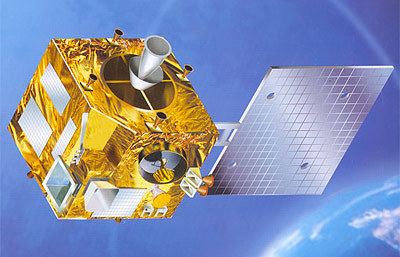Operator ISRO Mission duration 7 years Period 24 hours | COSPAR ID 2002-043A Launch date 12 September 2002 Launch mass 1,060 kg Bus I-2K | |
 | ||
Website Kalpana-1 on ISRO Web-site Manufacturer ISRO Satellite CenterSpace Applications Centre Dry mass 498 kilograms (1,098 lb) Similar INSAT‑3A, INSAT‑3D, INSAT‑3C, INSAT‑3E, GSAT‑2 | ||
Kalpana-1 is the first dedicated meteorological satellite launched by Indian Space Research Organisation using Polar Satellite Launch Vehicle on 2002-09-12. The satellite is three-axis stabilized and is powered by solar panels, getting up to 550 watts of power. The METSAT bus was used as the basis for the Chandrayaan lunar orbiter mission of 2008.
Contents
History
Originally known as MetSat-1, the satellite was the first launched by the PSLV-C4 into the Geostationary orbit. On February 5, 2003 it was renamed to Kalpana-1 by the Indian Prime Minister Atal Bihari Vajpayee in memory of Kalpana Chawla—a NASA astronaut who perished in the Space Shuttle Columbia disaster.
The satellite features a Very High Resolution scanning Radiometer (VHRR), for three-band images (visible, infrared, and thermal infrared) with a resolution of 2 x 2 km, and a Data Relay Transponder (DRT) payload to provide data to weather terrestrial platforms. Its mission is to collect data in layer of clouds, water vapor, and temperature of the atmosphere.
VHRR scanning radiometer
The three band images are:
